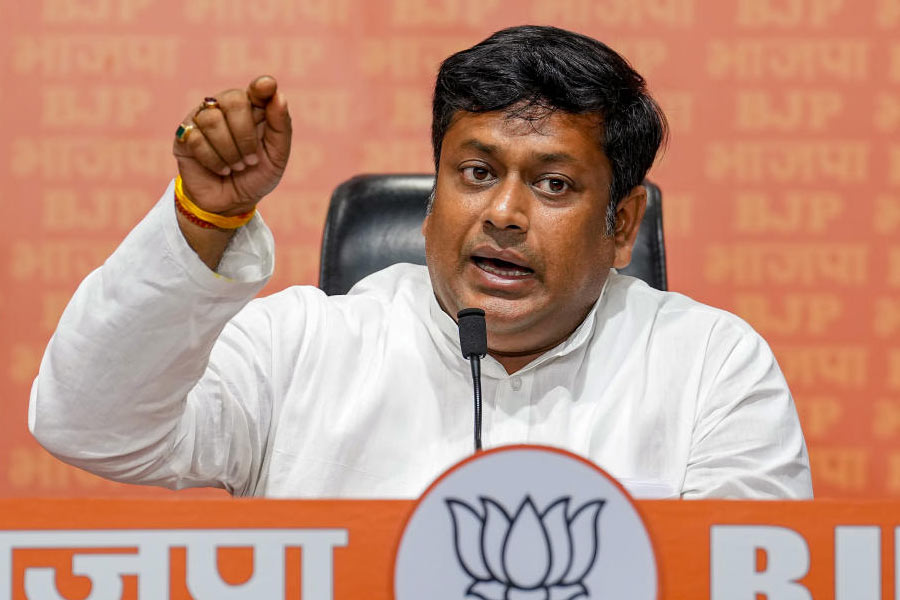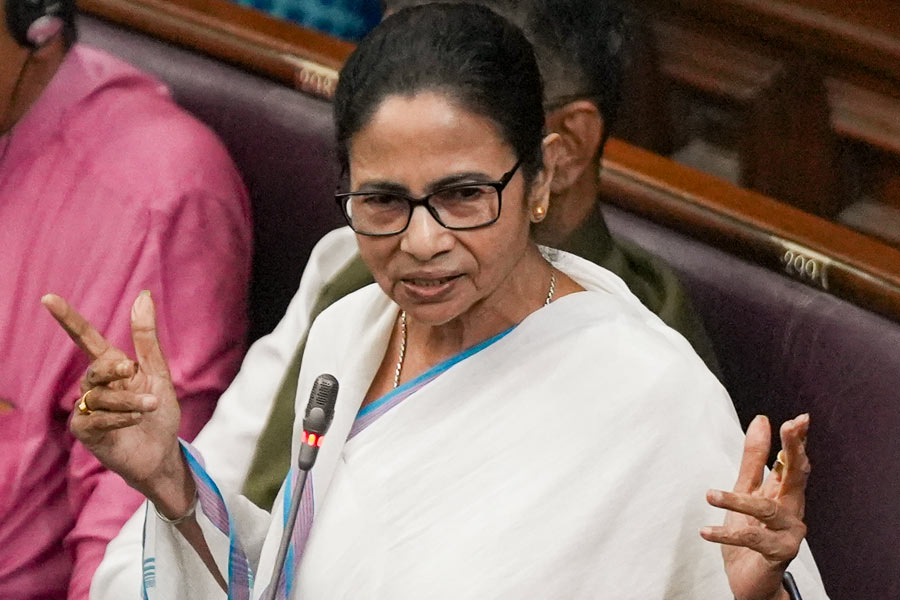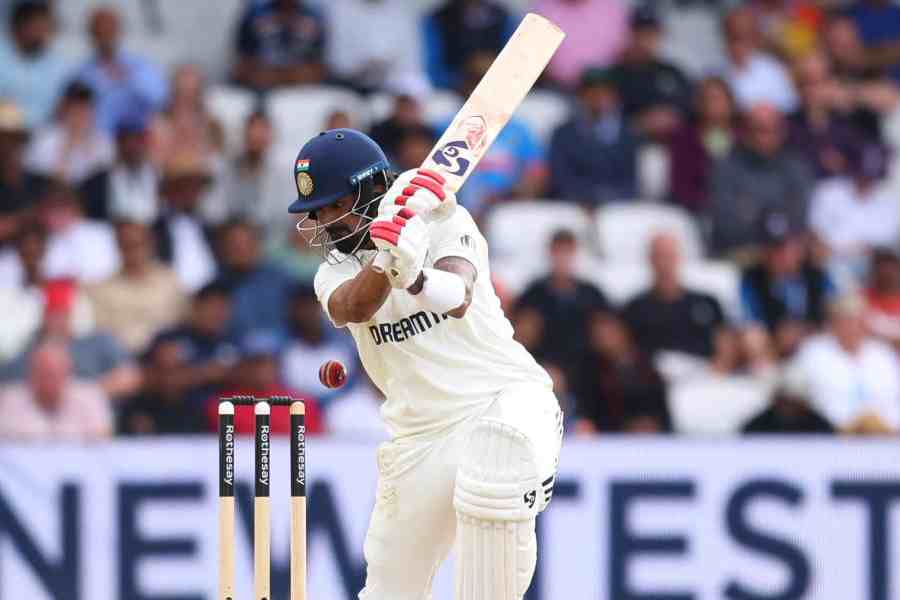|
|
| Water, water everywhere: Mumbai after the recent downpour; highrises rub shoulders with slums (below) |
|
|
For many, there was a sense of d?j? vu. This time last year, unprecedented rains had pushed the city to the brink of collapse, cutting off electricity lines, transport links and roads. This year, Mumbai had hoped that the administration would swing into action at the first signs of heavy rains. This week, as problems related to waterlogging mounted, it became apparent that the crisis was bigger than the deluge.
Mumbai, experts believe, is gasping for breath. “The process of Mumbai’s strangulation is complete,” says Chandrashekhar Prabhu, an expert on urban development and a lecturer in various US universities.
A wake-up call came just two weeks ago from the most unexpected quarters. While in the city to inaugurate the Mumbai metro rail project, Prime Minister Manmohan Singh burst forth on the need for better urban governance and a more responsive and transparent urban administration. But what took everybody by surprise was when Singh passionately called for freeing the municipal administration from corruption and the stranglehold of a land mafia.
“There is no development, no planning, no vision,” agrees S.S. Tinaikar, a former municipal commissioner of Mumbai who has been advocating transparency in governance. “Each plot of land in Mumbai is allowed to be exploited to the maximum,” he mourns.
Clearly, the nation’s financial capital is crying out for help. Mangroves are being cleared for water-intensive projects such as golf courses and amusement parks. Hillsides are being demolished for an urban transport project. High-rise buildings are mushrooming, as are slums.
“The state government never makes a conscious effort to augment the infrastructure of the city before thinking of development and urbanisation,” says Prabhu, a former Congress MLA. “Instead it is planning to bring in large tracts of agricultural land that are non-developmental zones into the developmental zone category.”
Not surprisingly, the judiciary ? often active on matters relating to the city and environment ? has stepped in. A division bench of the Mumbai high court, while hearing a petition by a city cardiologist, observed on Wednesday that little had changed in Mumbai since the July 26 deluge last year. Justice R.M. Lodha and Justice S.J. Vazifdar emphasised the “need for long-term planning”.
There is cause for concern, for the city has reached a stage where life is crippled by even a few days of normal rain. T. Chandrashekar, commissioner, MMRDA, however, is quick to blame the BMC for the recent deluge. “I don’t know why we are blamed. The MMRDA came into the picture just two years ago when the city was in the terminal stages and the situation had become alarming. All channels of drains, rivers, nullahs were encroached upon by slums and rampant construction. Imagine 400 km of nullahs are encroached upon, leaving no place for the water to drain. There are 1.2 million encroachments in the city. We are just doing fire fighting and can do planning only after that. I think the BMC should be held responsible because they collect the taxes and don’t deliver.”
The authorities believe that the 100-year-old storm water drains are to blame. On the other hand, environmentalists and activists hold the city is being starved of open spaces that worked as natural sponges for absorbing the rain water. The ratio of open spaces per thousand people in Mumbai is 0.02 acres ? well below the global average of four acres. Playgrounds are disappearing across Mumbai, and a thriving politician-builder nexus has been ruling Mumbai with its unchecked construction.
To be sure, in Mumbai’s 20-year development plan space is reserved for playgrounds, schools, open space and so on. But the development plan has been undermined over the years. Says Shiraz Rustomjee, a city lawyer who has taken up several briefs for open spaces in Mumbai, “The procedure is that once a place is reserved for a playground, the appropriate authority, in this case the BMC (the civic body) has to acquire it by purchasing the property if it is in private hands. However, the standard argument is that they have no money. Under the Maharashtra Town Planning Act, if land that is reserved for a school or playground or any public utility is not acquired within a given period, it lapses and goes back to the owner who can develop it. This is how we lost most of the open spaces in Mumbai.”
Even now, buildings are coming up in congested areas ? with some official help.
Over the last decade, land owners who give up part of their land or their entire land for public projects have been given development rights by the government in other parts of the city (this is called transfer of development rights or TDRs).
The outcome has been an explosion of construction in expensive suburbs like Bandra, Khar and Kurla. An activist, Bhagwanji Raiyani, filed a public interest litigation in the Bombay High Court against TDRs. Last week, Ramanand Tiwari, principal secretary, urban development department, Maharashtra government told the court in a statement, “It is neither necessary nor possible to impose restrictions on development through the use of TDR in Bandra, Khar, Santa Cruz or Kurla.”
The rot, however, is not of recent origin. The collapse, the experts believe, has been building up over the years. The city carved from seven islands has withstood reclamation ? land reclaimed from the sea ? from the year 1600 when the Portuguese ruled the islands. Says Nayana Kathpalia, co-convenor of CITISPACE, an organisation that pushes for open spaces in Mumbai, “The whole city of Mumbai is reclaimed land. But there is a limit to which we can reclaim.”
In the sixties, the then chief minister Vasantrao Naik carved out two separate and expensive real estate land masses from the depths of the sea. Nariman Point and Cuffe Parade were created by reclaiming land. Builders developed Nariman Point as a business hub in the south end of the city until it grew like a giant octopus, and drew the entire city’s labour force southwards every morning, disgorging them back in the northern suburbs in the evening. This put pressure on the transport system and jacked up the prices of property in Nariman Point and neighbouring areas such as Cuffe Parade.
And as Nariman Point, in south Mumbai, grew in importance, development happened along the railway tracks in Mumbai as some 70 lakh Mumbaikars boarded local trains to reach their offices in south Mumbai.
There have been periodic efforts to decongest the city. Until 1990, the focus was on the creation of New Bombay across the creek. City planners spoke of a counter magnet that would be close enough to Mumbai to be able to take the load off an old and sagging city. The then chief minister, Yashwantrao Chavan, proposed the two Bombay concept beyond the Thane creek in the sixties itself. But like all government monoliths, it took a good 20 years for the new city to emerge out of its cocoon.
Meanwhile, Mumbai’s population doubled from six million to 12.5 million. Almost two lakh people came into the city every year of which one lakh people came from the villages as migrants.
But even New Bombay has not managed to lighten the burden on the city. Not many offices and corporations are willing to shift beyond the creek, and even today, all roads lead to south Mumbai, as some 8 lakh two-wheelers and 5.5 lakh four-wheelers criss-cross the city’s flyovers.
By the time chief ministers Sharad Pawar, Manohar Joshi or Narayan Rane came to power ? from the nineties to the new millennium ? the “Decongest Mumbai” message was long lost. Somewhere down the line, the Bandra-Kurla complex came up. It has been blamed for the July 26, 2005, flooding as the complex was constructed by removing mangroves along a creek and because no dissipation space is left for the rain water.
Within Mumbai, three natural rivers ? Dahisar, Poisar and Mithi ? hold the city’s natural drain. All the three rivers have now been reduced to dirty nullahs. And wooded lands have given way to golf courses. The Shiv Sena-led government in the mid-nineties gave away a large tract of forest land in Goregaon in north Mumbai to a builder for a golf course.
Experts believe that only proper planning can save the city. “If you are going to put some bricks in a bathtub full of water, the amount of volume available for the water is less,” says Kapil Gupta, associate professor in the department of civil engineering, Indian Institute of Technology and an expert on urban drainage, drawing an analogy. “Once you occupy the empty land where will the water go?”
Gupta stresses the need to upgrade the storm water drain system. “We need to have storm water drains that can cope with 100 millimeters of rain per hour as opposed to the 25 millimeters of rain per hour,” he says.
A report submitted by consultants to the civic administration 14 years ago suggested just this but only now is it being dusted off the shelves.
Infrastructure, the experts believe, holds the key to the problem of Mumbai. “Any development at the cost of infrastructure is counterproductive,” says city architect P.K. Das. “Our bureaucrats are overdriven by the beautification syndrome. When they built the western express highway in north Mumbai they thought of wide roads and pavements and in the process reduced the size of the storm water drains.” Das stresses that while planning a road, there should be an integrated design of storm water drains where natural and constructed drains are networked.
At the root of the problem are lopsided development projects. Over the years, various government development bodies, the municipal corporation, politicians, construction lobbyists, the land mafia and parts of the administration have together turned Mumbai into what many describe as living hell. “Individual agencies are either working at cross purposes or are working contrary to each other’s interests,” says Das.
Mumbai was once a city that its people were proud of. It won’t be long ? its denizens fear ? before it becomes a city not worth living in.












